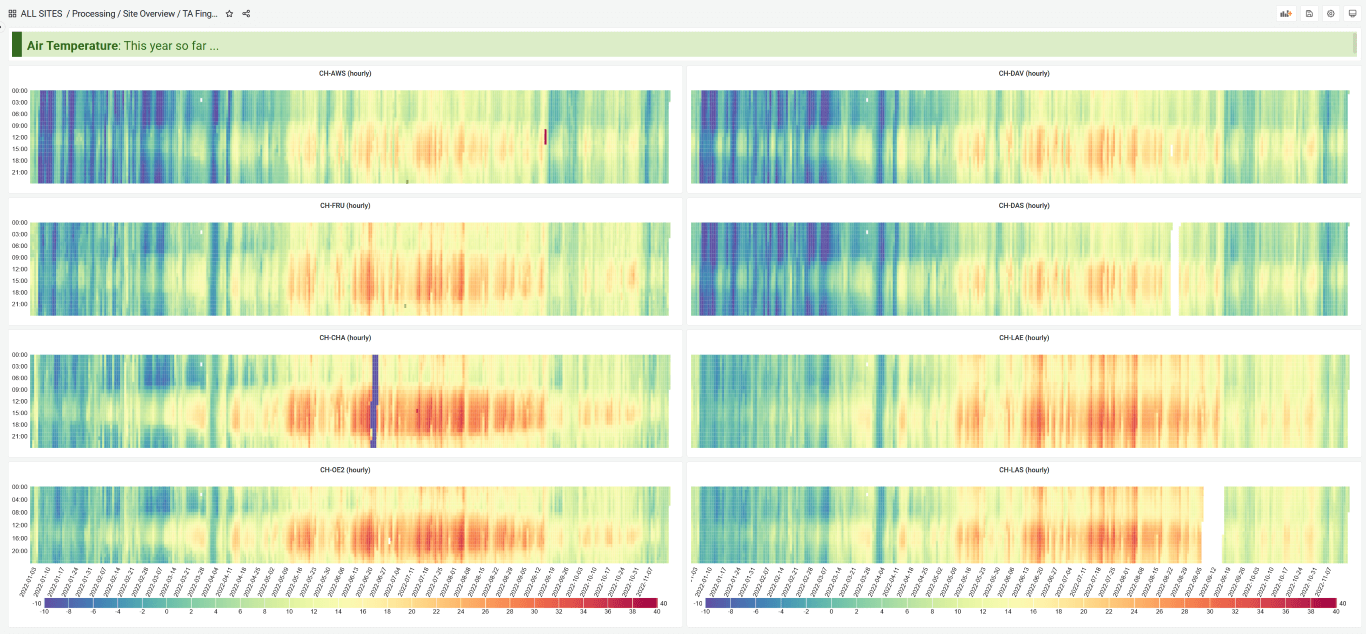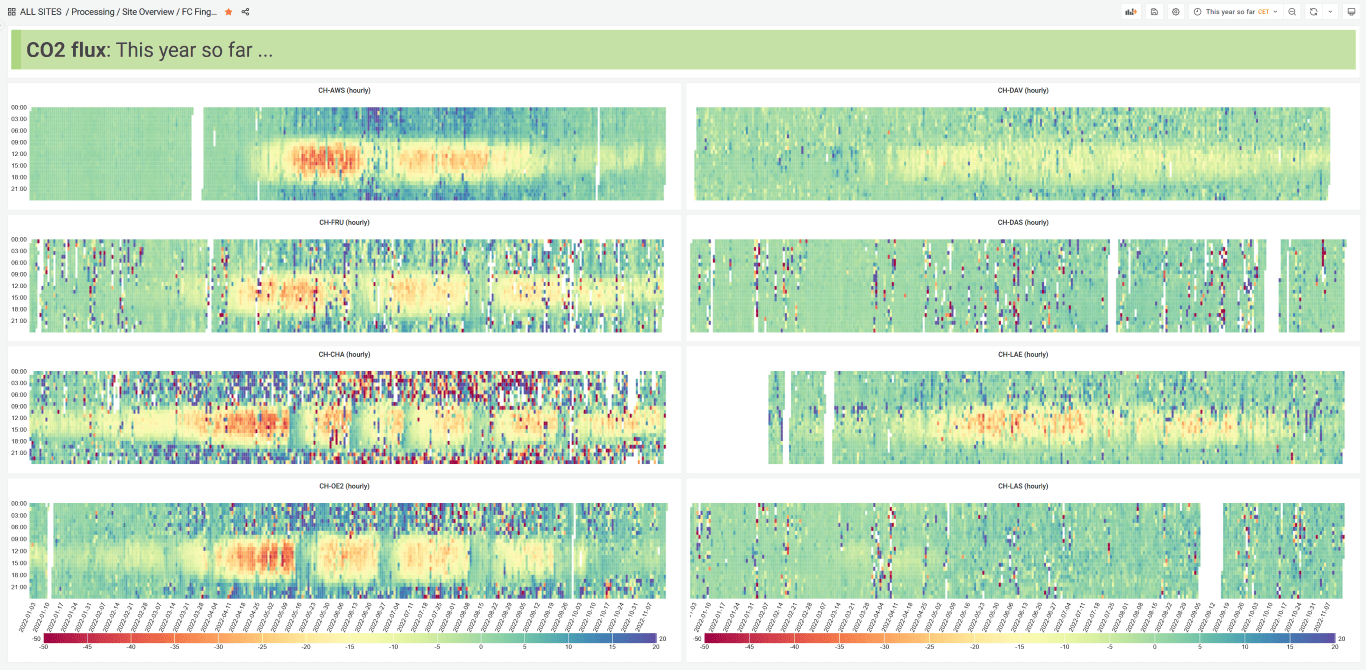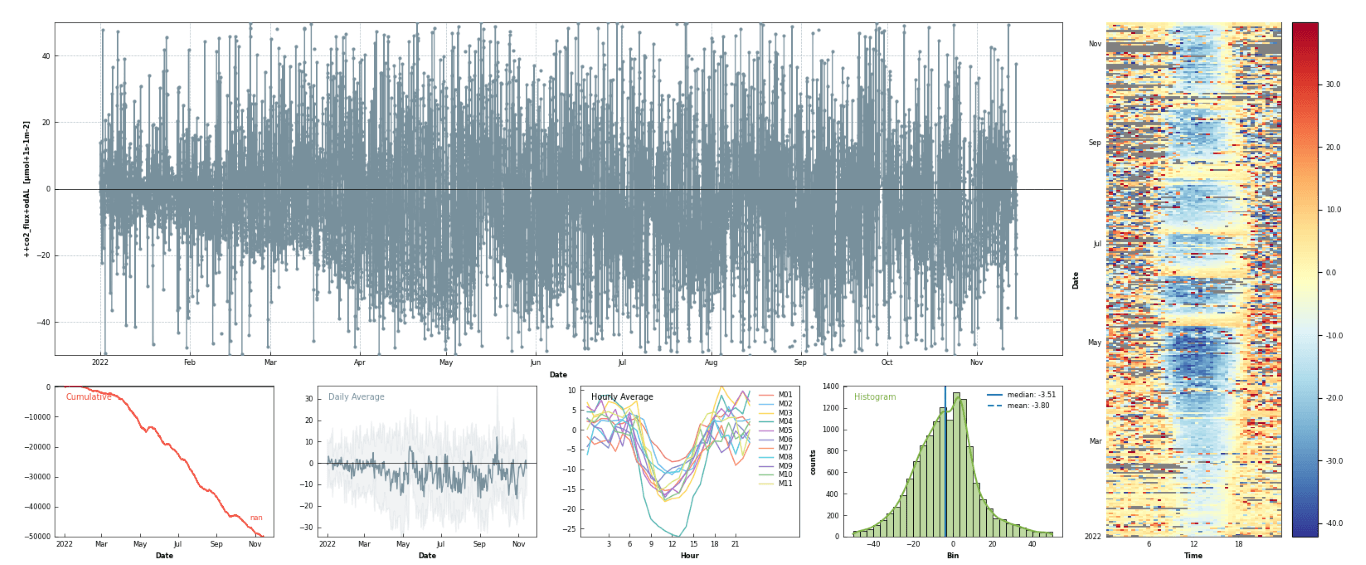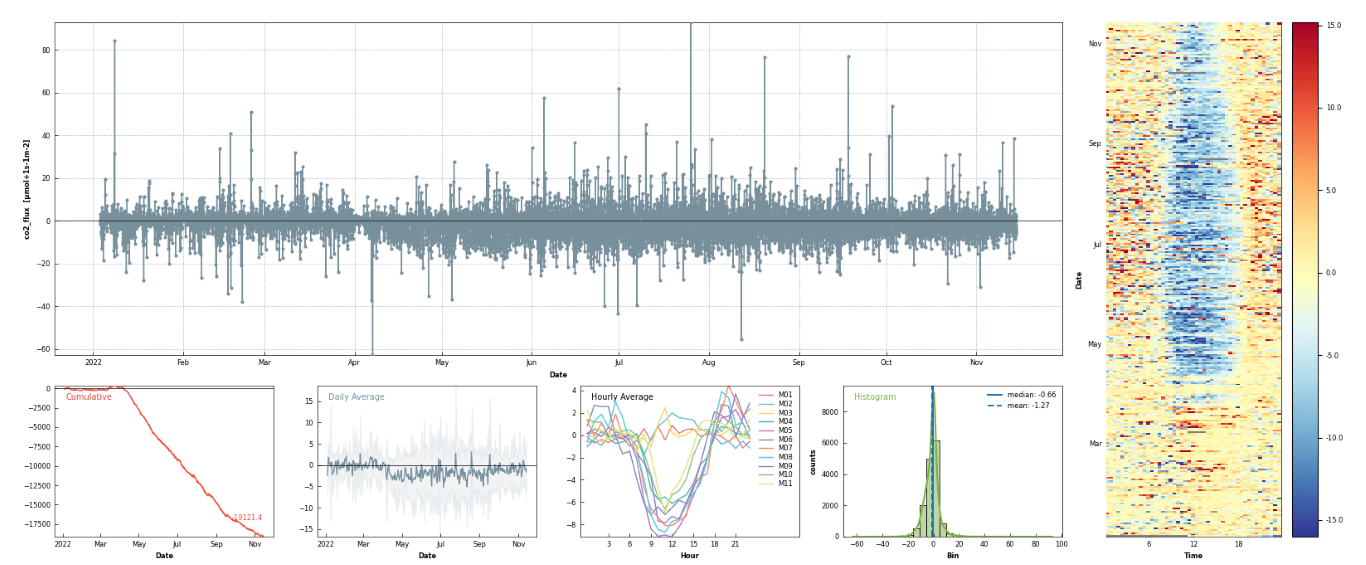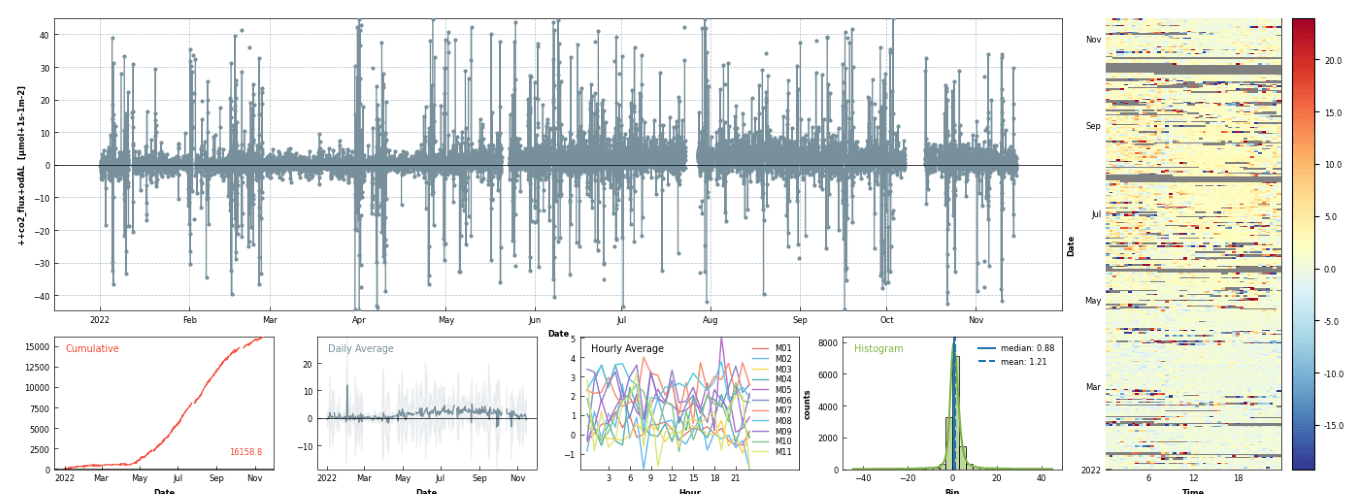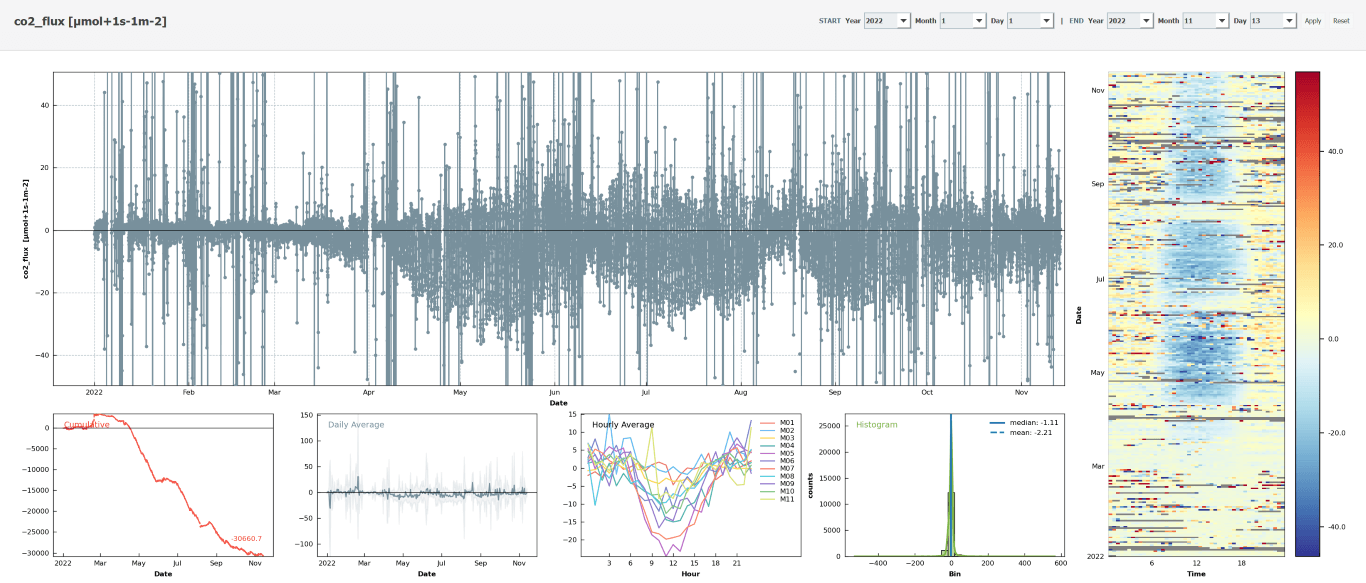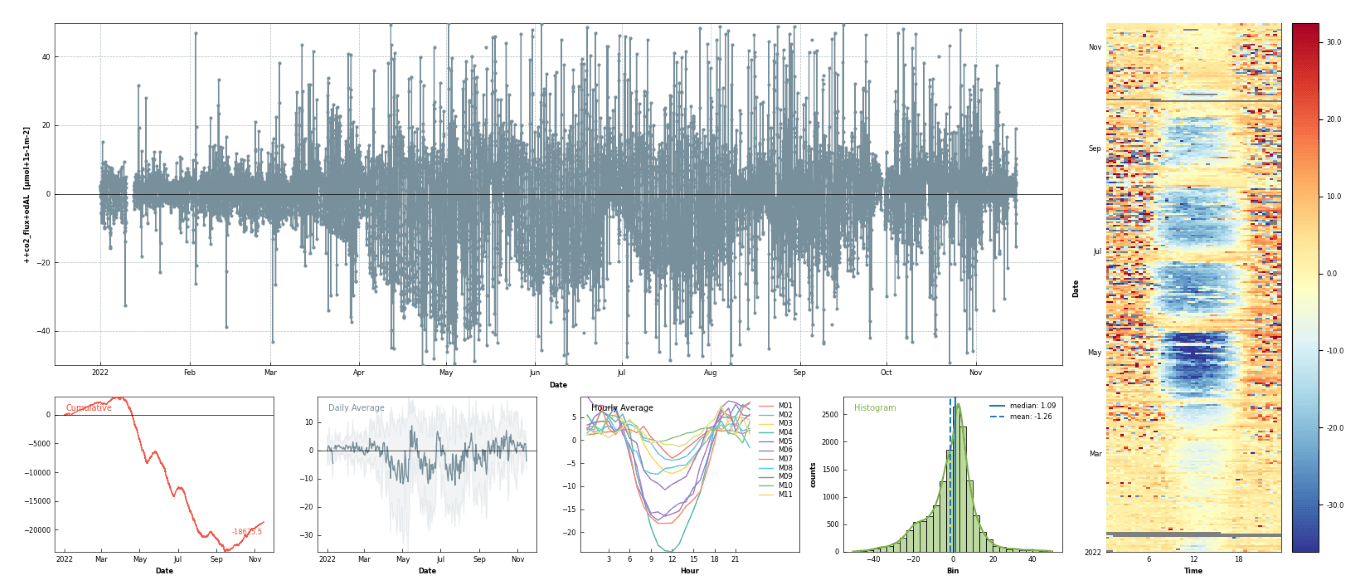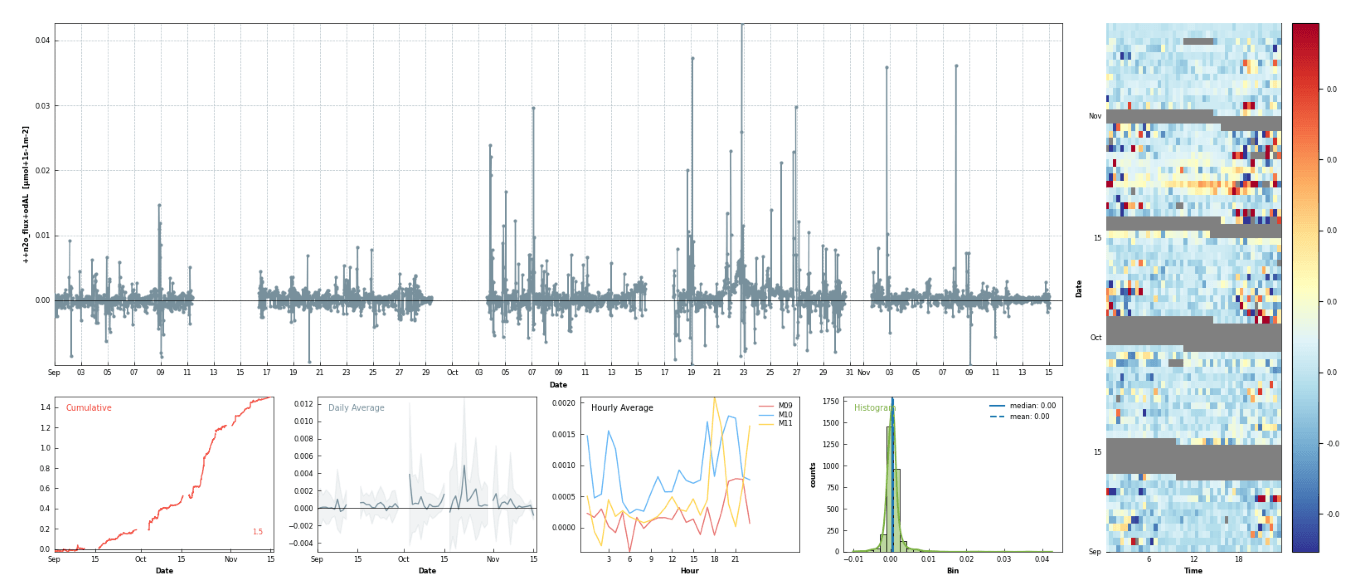Short Report – QA/QC Meeting Nov 2022
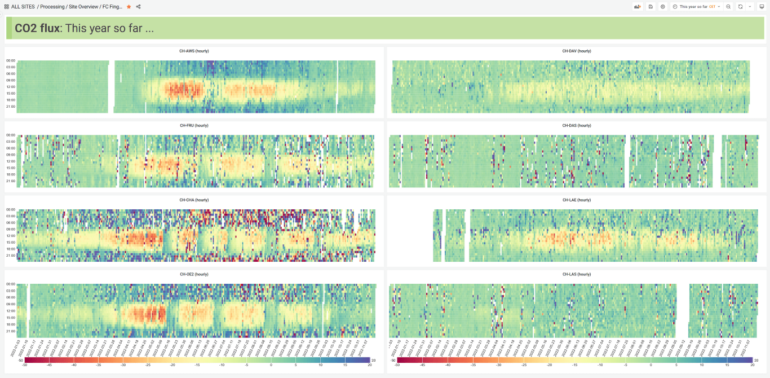
Meeting Date: 17 Nov 2022
News
- Meteoswiss stations: (TODO for SRPs) We need to search for the stations closest to our field sites that could be used for backup meteo data in case of data gaps and to cross-check our precipitation measurements.
- CH-AWS: Samedan, Bergün / Latsch
- CH-CHA: Cham, Wädenswil, Zwillikon
- CH-DAV: Davos, Klosters
- CH-DAS: same as CH-DAV
- CH-FRU: Cham, Oberägeri, Rossberg
- CH-LAE: Lägern, Zürich / Kloten, Ehrendingen
- CH-LAS: same as CH-LAE
- CH-OE2: Wynau, Langenbruck
- FluxCoffee: separate meetings to discuss data related issues, e.g. flux processing, started and will continue to take place. Next meeting is on Wed, 23 Nov 2022, 10-12h, room CLA D11.1
- GROUP-RDS: virtual machine to which everyone in the group has access. This VM will run the following scripts automatically:
- Your personal RDS: will get access to the database and run the diive meteoscreening scripts.
- Free disk space on grasslandserver:
gl-raw: 0.99 / 6.83 TB,gl-processing: 0.82 / 5.85 TB (10 Nov 2022) - InfluxDB has been successfully updated to the newest version
v2.5.1. - Grafana has been successfully updated to the newest version
v9.2.3. What’s new in Grafana 9? Checking a random EC raw data plot from each station- Checking recent fluxes from our stations
- Checking recent meteo data from our stations
General Info
- Attendance: If you are (Tech-)SRP, please attend QA/QC meetings or tell LH if you can’t, needed for planning of the meetings.
- Short statement: SRP & Tech-SRP: please prepare short statement about your site and post it on Slack together with the plot(s). You can also extend the already available text snippet(s) from previous meetings. (max. 2 sentences)
- Purpose: The purpose of QA/QC meetings is to check on current, incoming data. SRPs choose specific issues we should look at together and discuss in the group. Fluxes are checked if the respective SRP wishes to do so.
- Variables: There is a list of known variable abbreviations that you can use in case you wonder what an abbreviation means: Variable Abbreviations
- Check of EC raw data files:
- Recommended check for SRPs and T-SRPS: take a look at EC raw data files and check if they look OK
- Current EC raw data files are automatically converted to ASCII each day (done by the Python script bico)
- Files and their plots can be found here, e.g. for CH-LAS:
gl-processing\CH-LAS_Lae-Subcanopy\20_ec_fluxes\2022\raw_data_ascii
- Weekly flux calculations on the RDS:
- Please calculate fluxes and check them once per week, or more often if you wish to do so.
- If you cannot calculate the fluxes, try to find a substitute, e.g. LH.
- Please move your Level-0 results from the RDS to the respective Level-0 folder.
- Automatic upload of Level-0 fluxes to the database will be implemented soon.
- RDS folder: The folder
P:\Flux\RDS_calculationsis a temporary folder. Please move Level-0 flux calculations (preliminary fluxes) to the Level-0 folder ongl-processing. For example, for CH-CHA move files toZ:\CH-CHA_Chamau\20_ec_fluxes\2022\Level-0(gl-processing is mounted as drive Z in this example). - List of QA/QC Meeting dates: QA/QC Meetings 2022
Participants
LH, SB, SO, AS, FT, LK, IF, YW, RM, XZ (10)
Meteo Data
Grafana allows us to check meteo data from multiple stations in one plot. Both SW_IN and TA are very important variables, make sure to check them regularly.
Air Temperature
Radiation
Recent Fluxes
ALL SITES
CH-AWS
Short data gap in March due to software issues. CO2 uptake increasing until June, then mid-June becomes a CO2 source, probably due to grazing (and/or high air temperatures).
CH-CHA
Very clear and consistent CO2 uptake since first day of the year. Fertilization on 14.3., rain on 15.3. (only rain event in March). N2O and CH4 fluxes nearly complete, only one 24h-gap so far this year. Very obvious sharp decrease of CO2 update after the mowing events. Five mowing events so far this year (May 10th, June 10th, July 6th, Aug 9th and Sep 21st). The QCL instrument for N2O and CH4 measurements was removed from the site in July. N2O emission peak around the July 1st. Winter grazing will start soon.
CH-DAV
EC system runs well, but there was an issue with one of the sonic transducers (it popped out of the housing, found 9 Feb 2022, transducer was pushed back in), no issue visible in data. Sonic was replaced on 8 Mar 2022 (HS-100). CO2 uptake is consistently low for this time of the year. This summer was the hottest summer so far since 1997 (up until 11 Aug).
CH-DAS
After snowmelt (in April?), clear net emission of CO2, see the red cumulative curve in the lower left corner of this plot:
CH-FRU
High CO2 uptake, few gaps. Harvest in June (not confirmed yet), approx. at the same time as the very hot day (19 June 2022). Harvests clearly visible.
CH-LAE
Unknown data format between mid-December and start of February, we will try find out the format. Data gap in February due to calibration. An interesting phenomena was decrease in sensible heat in May as the energy was used more for latent heat. Strongly reduced CO2 uptake during the heatwave, clearly visible after mid-July.
CH-LAS
CH-LAS recorded the highest VPD across all sites: 53.5 hPa on 4 Aug 2022.
End of April beginning of May the cumulative of CO2 over-passed the zero line, then there was a small pick of positive NEE (but we have some data gaps there) and after the NEE over-passed zero line again. As soon as the tree leaves came out in mid May the uptake of wild garlic decreased and the forest floor became a carbon source again.
CH-OE2
CH-OE2 is currently a temporary grassland. Already very clear CO2 uptake during the day since start of year. First cut of the temporary grassland on 14 May. Second cut of the grass on 25 June. Third cut on the 8 August. VPD was > 46 hPa over the summer. Total 4 cuts, glyphosate application and direct sowing of winter wheat.
Last Updated on 12 Jan 2023 11:26

